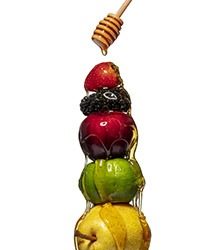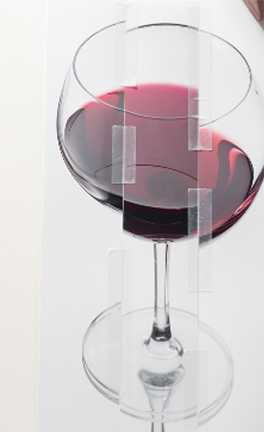For many wine lovers, the subject of a wine’s aging potential can be intimidating or seem like artful science that is best left to the wine gurus of the world. Some are often misguided by false myths that all wines can age or that homemade wines cannot age.
We can use our knowledge of the wine’s chemistry and organoleptic attributes (color, odor, taste and feel) to evaluate how long a wine can last and when it will be best to drink. With experience, we’ll be able to estimate the life of a wine by relying solely on its organoleptic attributes — like the pros who do not have access to analytical data when tasting wine.
Wine is first created in the vineyard as the soil, climate and viticultural practices (e.g. crop thinning, timing of harvest, etc.) dictate the quality and chemistry of the fruit. Only the best fruit coupled with sound winemaking methods will yield age-worthy wines. In general, reds will age better than whites; however, the vast majority of wine produced globally is meant for drinking as soon as it is marketed or within a year or two. Only a small percentage of wine, about 3–5%, is meant for extended cellaring. Homemade wine can be made to last many years.
The wine’s chemistry — namely, color, pH, acidity, tannins and alcohol content — plays an important role. Each indicator impacts aging potential, however, they must be considered holistically for a more accurate assessment. If any one indicator is abnormally low or high for a specific style of wine, the wine will be unbalanced and may not age gracefully.
Understanding the indicators will not provide an exact assessment in years, but will give you some clues as to when the wine should be drunk. As you acquire tasting experience and follow a wine’s evolution over time, your estimates will greatly improve.
Acidity, pH and Color
A wine’s pH and color are the most important indicators when assessing aging potential. Lisa Van de Water, of the Wine Lab at Napa, best summarized the effect of pH on wines, as reported by Donald E. Gauntner in the American Wine Society Journal (Winter Issue, 1997).
“At lower pH, red wines are redder, fresher, fruitier, younger tasting for their age, slower to age, slower to mature, less complex, less full-bodied, much slower to spoil, and easier to maintain free of spoilage in the cellar because the SO2 is more active.”
“Higher pH wines, if they are red, are less red (sometimes brown, sometimes purple), less fresh, less fruity, more complex, more full-bodied, faster to age, faster to mature, easier to spoil, and more difficult to manage in the cellar with SO2.”
Wine typically has a pH between 3.2 and 3.6 with whites at the lower end and reds at the higher. Below this range, the wine’s high acidity may make it unbalanced, and above this range it will be unstable and dull. In whites, the color will darken to a gold color and turn to a brownish color if aged too long. In reds, the color will lighten and take on an orangey color, followed by a brownish color, most noticeable at the rim. If color and pH suggest that the wine is in its prime, reassess the wine at least once a year. Keep records of each wine’s evolution to understand its aging dynamics.
Acidity has an inverse relationship to pH: A low-pH wine will have a higher acidity and a high-pH wine will have a lower acidity. As such, the refreshing acidity in wine is a good indicator of its aging potential. A flabby or flat wine lacks acidity essential for aging and should be drunk as soon as possible.
Tannins
In red wines, tannins are responsible for body and aging potential, and interact with color pigments to provide color stability. They are essential in making age-worthy wines. Tannins are anti-oxidants and, therefore, mouth-puckering, tannin-rich wines will live longer than low-tannin wines. A wine described as “full-bodied” implies that the tannin content is high while one described as “not approachable in its youth” implies that the tannins are too harsh and require aging to soften.
White wines are very low in tannin concentration and are therefore not meant for aging. The best white wines aged in oak barrels can live longer however, because of the higher tannin content. Similarly, wines (e.g. Beaujolais Nouveau) made by carbonic maceration — a technique used to trigger fermentation within whole berries to extract maximum fruit flavors but with no tannin extraction — are not meant for aging being low in tannin content and malic acid.
Alcohol
High alcohol levels in wine is often (mistakenly) interpreted as “full-bodied.” A low-alcohol wine can be full-bodied while a high-alcohol wine can lack body. However, alcohol acts as a preservative, and therefore, higher-alcohol wine will generally outlive lower-alcohol wine.
For example, a tannin-rich, 20%-alcohol port wine can age for decades whereas a fruity, 7%-alcohol Muscat wine should be drunk much earlier. In contrast, a syrupy sweet, 10%-alcohol icewine can be aged ten years or more owing to its higher acidity.
Aroma and Bouquet
A wine’s aroma and bouquet can reveal important clues about a wine’s aging potential. Wines are often described as “closed in,” and therefore requiring cellaring to achieve their full potential. Let’s first understand the difference between aroma and bouquet. Émile Peynaud — an authoritative research enologist and teacher of modern winemaking — best describes these terms in The Taste of Wine: The Art and Science of Wine Appreciation (Michael Schuster, tr., Macdonald & Co, 1987). Aroma is “the sum of (odor) elements in young wines” and bouquet is “the smells acquired through (aging), which develop gradually over the course of time.”
“Defined in this way young wines owe their charm more to their aroma than their bouquet, while the appeal of wines with several years of bottle age will be due entirely to their bouquet.”
Young wines will tend to exhibit aromas acquired from the grape varieties used and vinification methods, such as yeast selection. They may lack complexity and therefore seem “closed in” as the aromas have not had a chance to evolve and transform into more flavors as a result of oxidation and complex chemical reactions. Once transformed from aging, the bouquet can exhibit multiple flavors — the more flavors, the more complex.
How can one tell if a wine is past its prime judging from its bouquet? Assuming that the wine has not acquired any faults from poor winemaking or poor cellaring, the wine might well be past its prime if the bouquet seems one-dimensional or has off-odors. The wine is said to be fatigued, having lost much of its fruity aromas and subtle bouquet. Off-odors may include a vinegar smell or a pronounced nutty flavor (usually accompanied by a brownish color).
Free SO2
Free SO2 is not a factor when evaluating aging potential; however, it is used as a preservative to ward off microbial spoilage and premature oxidation. Although it helps the wine, sulfite addition should not be mistaken as a means to extend the life of wine. The recommended nominal free SO2 level is about 10 times the decimal value of the wine’s pH. For example, a red wine with a pH of 3.3 requires 30 mg/L; add an extra 10 mg/L for whites.
Cellaring
Remember the three cardinal rules of proper wine cellaring if you intend to age wine.
1. Maintain a constant cool cellar temperature in the 54–59 °F (12–15 °C) range.
2. Maintain relative humidity in the 65–75% range.
3. Protect wine from vibrations, light and odors.






